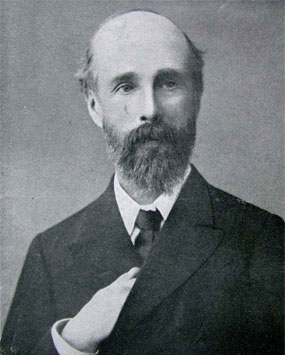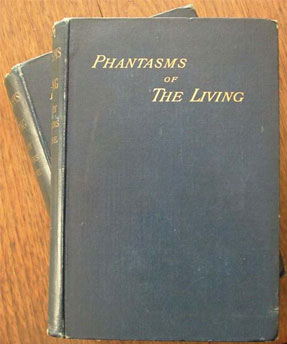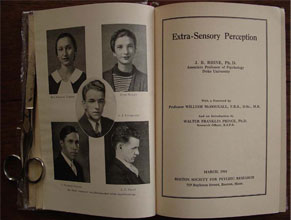
I became interested in parapsychology and the paranormal, at least in part, through my studies of Ancient Egypt. According to the traditional view, what was the overriding preoccupation of ancient Egypt? Death and the afterlife. Say “Egypt” and pyramids (popularly interpreted as giant tombs), mummies, and the so-called Book of the Dead immediately come to mind.
Having studied them in depth, it is clear to me that the pyramids, and the Great Pyramid in particular, were not solely or even primarily overblown mausoleums. Indeed, the Great Pyramid may have served both astronomical and astrological functions, literally being an observatory at one stage of its development, as well as having been used for ritualistic purposes. Many modern visitors describe powerful and life changing experiences in the Great Pyramid. One of the most famous is Napoleon Bonaparte. While in Egypt (August 1799) Napoleon visited the Great Pyramid. He entered the King’s Chamber, and asked to be left alone. Upon emerging, Napoleon was pale, faint, and silent. Asked by an aide what happened, Napoleon refused to say anything of substance, intimating that he had experienced a preview of his own fate. Just before his death in 1821, Napoleon appeared to be on the verge of telling a close friend what had occurred in the King’s Chamber. Then he hesitated, “No. What is the use? You would never believe me.”
I have spent many hours, including several times almost the entire night (but not sleeping, mind you), in the Great Pyramid. And I have spent much time exploring other temples and tombs throughout Egypt, as well as pyramids, temples, and sacred places elsewhere in the world. Initially I approached the ancient monuments as a geologist, focusing on the materials from which they were constructed. Soon, however, I became involved in studying not just the stones, but why past civilizations had erected the stones into magnificent edifices. The why behind the monuments, more often than not, apparently included religious beliefs and practices, initiation rites and rituals, which in many cases seemed to have an ostensible paranormal aspect, whether it was clairvoyance, divination, or manifestations of higher levels of consciousness. Were the ancient structures used to genuinely alter consciousness, and possibly enhance paranormal phenomena? Were the ancients skilled psychic engineers, carefully manipulating the incorporeal with their megalithic stone monuments and occult practices? Or, as many skeptics assert, does superstition, perhaps combined with pious fraud on the part of a priest or priestess, account for the tales?

My formal training as a physical scientist certainly did not encourage the notion that paranormal and psychic phenomena, much less life after death, were anything other than imagination gone wild or charlatans praying on the gullible. According to a conventional materialistic and secular “scientifically rational” worldview, the paranormal does not exist and death is the final end. It was easy, and indeed comforting, to put such issues out of mind. Stick to the hard evidence of the rocks, the domain of the geologist.
However, issues of the paranormal and questions about survival kept nagging at me. Ultimately, I realized, I must address these topics head-on, if only for the sake of satisfying my intellectual curiosity. For me the first issue was to research various reputed anomalous psychic abilities among the living, such as telepathy (direct mind-to-mind transfer of information without utilizing any of the conventional senses) and psychokinesis (mind affecting matter directly, such as moving objects; see below). I wanted to establish what, if anything, in terms of the paranormal is possible among the living before addressing the issue of postmortem survival (a topic about which I still have serious questions).
It took me over ten years from my first visit to Egypt, to get to the point where I was prepared to take a serious look at the paranormal. I have taught fulltime at Boston University since 1984, and every year I have a new batch of students. Many simply want to take their courses and get a degree, but then there are those who really strive to go beyond their formal studies. One such student was Logan Yonavjak. She served as my field assistant on research expeditions to Egypt and Peru in 2003 and 2005, and she was the final impetus that prodded me to take a serious look at the paranormal. She and I undertook a comprehensive survey of the scientific literature addressing psychical research and the paranormal (the field now generally referred to as parapsychology). We read literally thousands of papers, pro- and con-, and we both became involved with the field first-hand. The result of our collaboration was the book The Parapsychology Revolution: A Concise Anthology of Paranormal and Psychical Research (published by Tarcher/Penguin in 2008).
Our studies convinced me that, once the fraud, bunk, and self-delusion are eliminated, there is something to the paranormal. The best-documented class of paranormal phenomena is telepathy. There is strong laboratory evidence for telepathy, such as classic card-calling experiments as well as many more sophisticated tests. There is also a large and compelling body of evidence from spontaneous cases supporting the reality of telepathy. For instance, crisis apparitions, veridical hallucinations, or “ghosts”, are well known.

A real example of such a hallucination taking the form of a “ghost” is as follows. A young woman thought she saw one evening, for a few moments, a hallucination of a friend in the room where she was reading. The young woman later learned that her friend had unexpectedly become ill and died that same evening, around the same time that the hallucination occurred. Furthermore, the friend had been asking for the young woman at the time of her death. The deceased friend had been thinking of the young woman at the time the young woman had the telepathic hallucination of her friend.
The evidence for psychokinesis (or PK for short) is also strong, including micro-PK studies at an atomic level using random number generators, such as the evidence developed by the Princeton Engineering Anomalies Research (PEAR) labs over more than a quarter of a century. Human intention, focusing on a random number generator under the correct conditions, can cause it to go non-random. This should not be the case according to conventional science, but such experiments have been replicated under strictly controlled conditions numerous times. There are also many examples of carefully studied incidents of macro-PK (affecting larger objects) associated with genuine spontaneous poltergeist cases. In a typical poltergeist case objects inexplicably fall off of shelves or get thrown through the air even when nobody is close enough to reach them, and no physical means are apparent that could have caused the objects to move. It appears that in most cases the affected objects are not being moved by spirits or ghosts, as traditionally believed, but unconsciously via paranormal means by a living person, someone who is typically emotionally or psychologically disturbed.
Another line of evidence for the reality of paranormal phenomena is research on presentiments or “pre-sponses,” essentially a form of short-term precognition as measured by physiological parameters (heart rate, electrodermal activity, and so forth). Numerous replicated experiments have demonstrated physiological responses of individuals to disturbing photographs, for instance, a second or two before they are actually viewed by the person. According to conventional science, this should not be possible.
My research on parapsychological phenomena among the living continues. At this point I agree with the following statement made by the late David Fontana, a well-known psychical researcher who, among other positions, was at one time Professor of Transpersonal Psychology at Liverpool John Moores University: “Psychic abilities are a matter of fact not of belief. What they are and what they mean for our view of reality is another matter, but one cannot dismiss them as fiction and yet retain credibility as an unbiased observer.” (Fontana, 2005, Is There An Afterlife?, O Books, UK, pp. 468-469)
